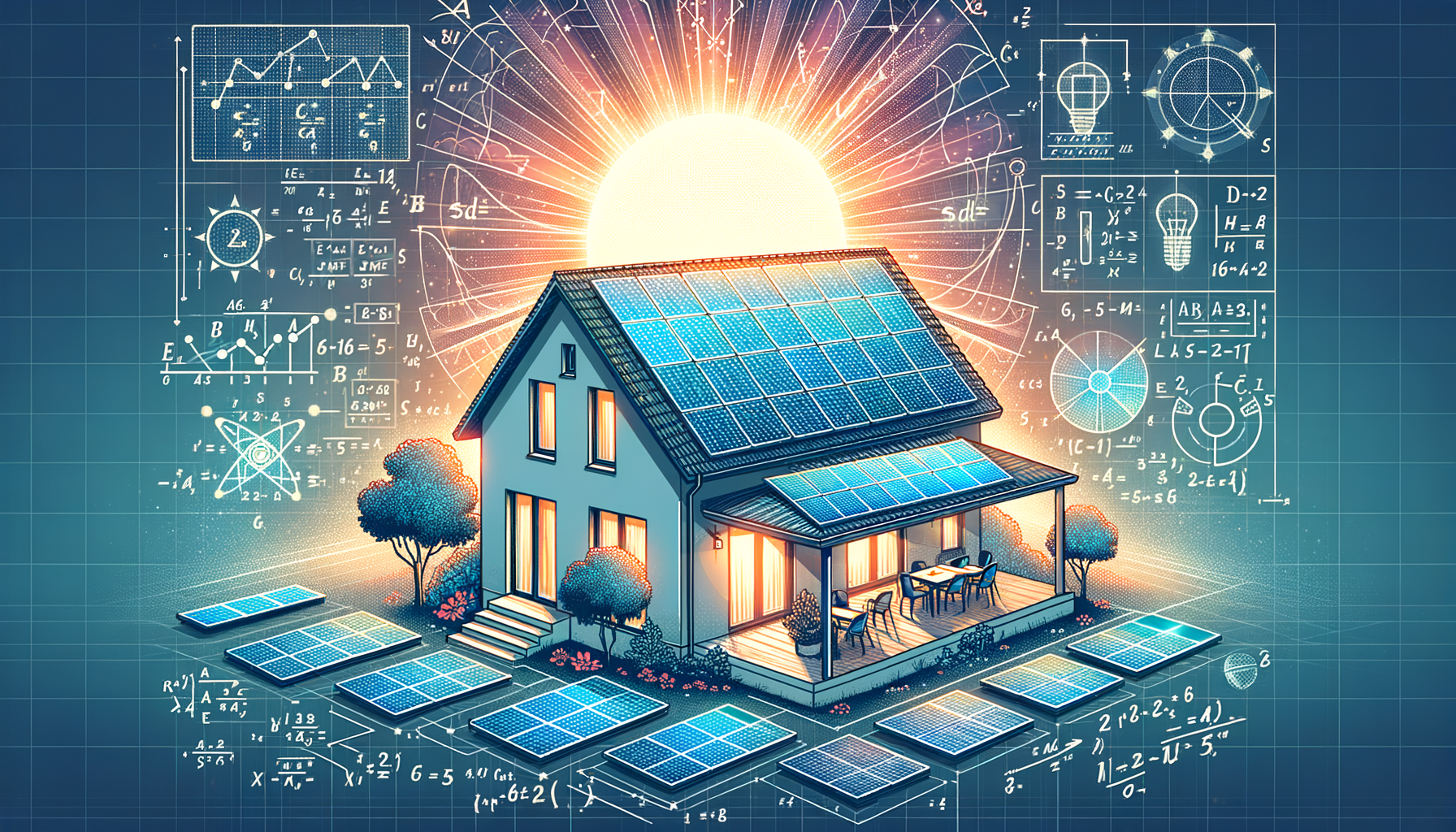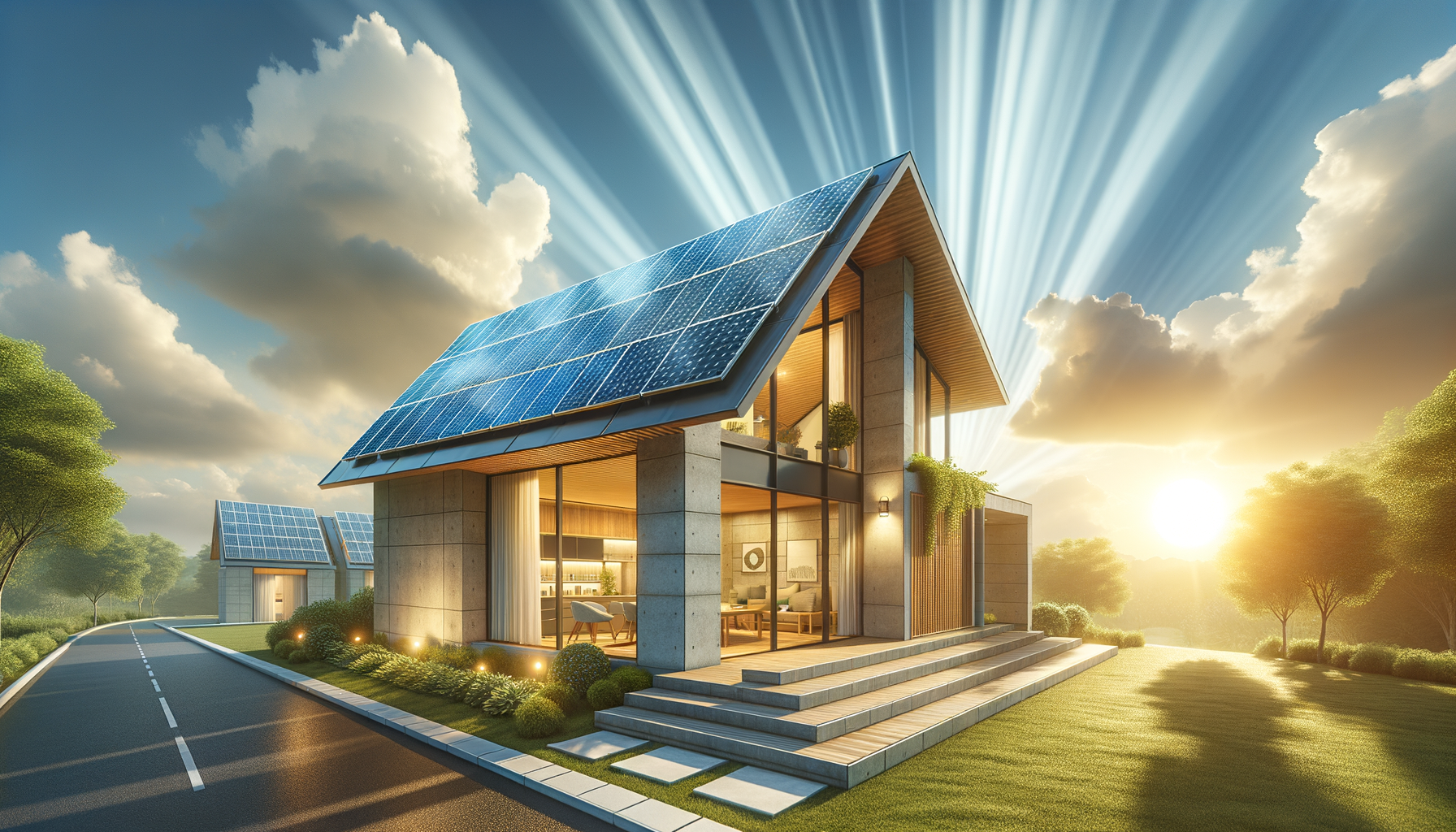How to Estimate Your Solar Panel Needs Efficiently

Updated 5 months ago
Harnessing the Power of the Sun: Your Complete Guide to Solar Panel Needs
Embarking on the journey toward sustainable energy with solar power starts with understanding your specific needs. How many solar panels will suffice to power your home efficiently and effectively? Let’s illuminate the pathway to estimating your solar requirements, add value to your property, and transition to a greener lifestyle.
Understanding Your Energy Usage
Before we delve into the mechanics of solar panel estimation, we must understand our current energy consumption patterns. Your household energy use is the cornerstone, influencing the size of the solar system you'll need.
Annual Kilowatt-Hour (kWh) Check-up
Your electricity bill is your best friend here. It indicates how much electricity you use in kilowatt-hours (kWh). Gather bills from the past 12 months to capture seasonal variations and sum up your annual consumption. Common household energy usage in the U.S. will typically fall between 10,000 and 12,000 kWh annually, but always base your calculations on your specific figures.
Solar Hours and Peak Sunlight
Your geographical location plays a pivotal role in how much sunlight your solar panels can convert into energy. Peak solar hours refer to the times when the sun is strong enough to be harnessed efficiently by solar panels.
Geographical Impact
Regions receive varying amounts of sunlight due to their position on the globe. For instance, a home in Portland might need more panels than one in sunny Phoenix due to the difference in sunlight intensity and duration.
Panel Efficiency and Your Roof Real Estate
Solar panel efficiency—how well a solar panel converts sunlight into electricity—varies among panel models. On average, efficiencies range from 15% to 20%, with high-efficiency panels at the upper end of this spectrum.
Roof Considerations
Eligible roof space is just as crucial as efficiency. Obstructions like vents, chimneys or shaded areas will affect solar potential. The size, shape, and orientation (ideally south-facing in the Northern Hemisphere) of your roof are determining factors in how many panels it can support.
Net Metering and Potential Savings
Beyond the energy your solar system produces, it's also essential to consider net metering policies in your area. Net metering allows you to sell excess power back to the grid, potentially saving you more money on your energy bills.
Financial Incentives
Check for federal tax credits, local rebates, and solar renewable energy certificates (SRECs) that could lead to significant savings when installing solar panels.
Estimating Solar Panel Needs – The Equation
The formula for estimating your solar panel needs can be simplified into a straightforward equation:
Number of Panels = (Annual kWh Usage / (Peak Sunlight Hours per Day * 365)) / Panel Wattage
Choose a panel wattage that fits your budget and roof size—you will find panels ranging from 150W to 370W commonly used in residential installations.
For instance, if your annual kWh usage is 11,000 kWh, your area receives an average of 4 peak sunlight hours per day, and you opt for 250W panels:
Number of Panels = (11,000 / (4 * 365)) / 250 ≈ 30 panels
Remember, this is a simplified equation. A professional assessment incorporates factors like roof angle, the local climate, and system losses due to inefficiencies.
Choosing the Right Solar Panels
Now that you're equipped with an estimate, how do you choose the right panels?
Types of Solar Panels
- Monocrystalline: High efficiency and performance, but typically more expensive.
- Polycrystalline: Good efficiency at a lower price point but may require more space.
- Thin-Film: Less common for residential use due to lower efficiencies and larger space requirements.
Working with Professionals
An on-site evaluation by a solar installer will iron out the finer details of your solar needs:
- Solar Panel Layout: Placement and arrangement of panels on your roof.
- Installation Needs: Structural integrity of the roof, potential upgrades or repairs.
A professional can also help navigate permits, regulations, and ensure that the installation is performed safely and to code.
Future Energy Goals
Consider your future energy needs. Are you planning to buy an electric vehicle? Do you foresee your household growing or your energy requirements increasing over time? Anticipating these changes helps ensure your solar system will remain adequate in the years to come.
Call to Action
Ready to take the next step in your solar energy journey? With our simple calculator, find out how many solar panels your home requires and start saving on your energy bills today. Enter your zip code below and get a personalized estimate for your solar project!
Choosing the right number of solar panels isn’t just about meeting your current needs—it's about forecasting for sustainability. Use this information as a springboard to leap into a future where your home harnesses the power of the sun, producing clean energy and offering long-term savings.
NavigatorMoveForward with precision and the sun's infinite energy on your side. Calculate, install, and embrace your solar-powered life.
Remember: Solar investment is not only about energy. It's about the future—of your home, finances, and our planet.




